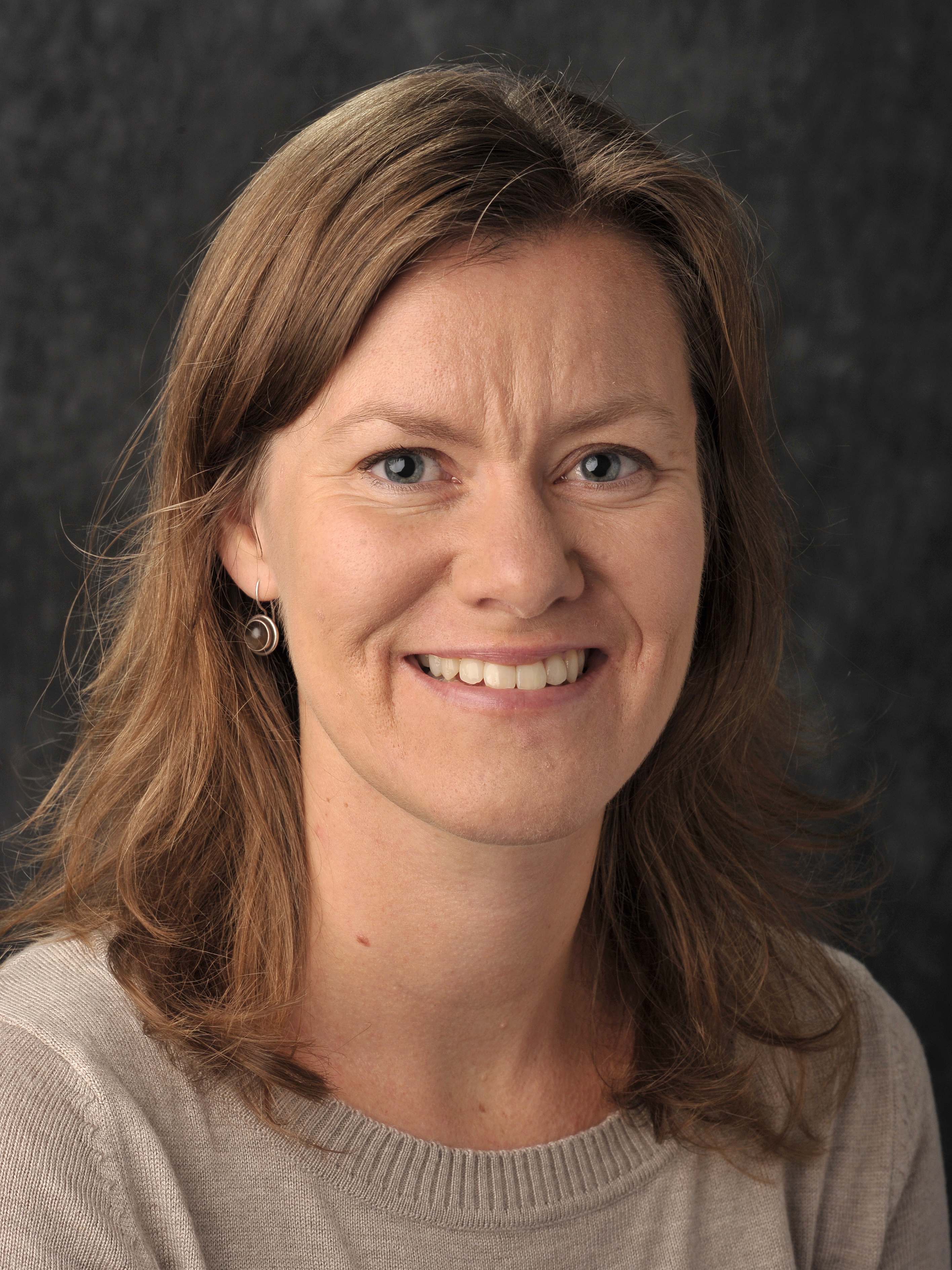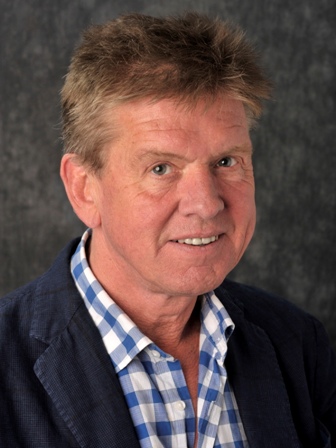Students dissatisfied with gender imbalance
Students want gender balance in their academic fields, and feel they benefit academically from a combination of women and men. However, persistent stereotypes may be an obstacle to the long-sought-after gender balance.
This is one of the findings in a new report published recently.
Cecilie Thun, who conducted the study together with Øystein Gullvåg Holter, is surprised how unanimous the students are in their desire for gender balance in their study programmes. The students talked about their positive experiences working in gender-mixed groups.
“We asked open questions, and the clear response we got was that cooperation in gender-mixed groups is positive, for slightly different reasons. It’s very interesting. Students from academic fields with a gender imbalance talked a lot about gender in the interviews. The students want to have more of the gender that is in the minority and are mostly positive about using various measures to achieve it,” says Thun.
Positive for learning
In their work with the report on gender balance and learning outcomes, Thun and Holter have explored three academic fields at the master’s level at the University of Oslo:
- Informatics, which has a clear majority of men.
- Special education, which has a clear majority of women.
- Political science, which is almost gender balanced.
The study is based on in-depth interviews with individual students and a questionnaire given to a larger sample.
“Do the students think that better gender balance has a positive impact on learning?
“Yes, when we asked who the students preferred to work with based on what they gain from it and how it affects what they learn, they thought that a more gender-mixed group was positive. In special education, they thought it was positive in part because female and male students who are raised in a society where they are socialized a bit differently can bring different experiences and different perspectives to academic discussions. Some also thought that it had an impact on the group dynamics. The women were perceived as quieter and more reflective and the men as more assertive. There were many different explanations for this, but it was clear that they wanted a gender-mixed group in order to get a better academic outcome,” says Thun.
The result is the same all the way around – a clear desire for a gender-balanced study environment and work groups. At the same time, the study shows how gendered perceptions or stereotypes are related to the various academic fields and how they affect the choices and assessments made by the students as well as staff.
Culture of achievement
“In political science, which is gender balanced, the topic of gender was not discussed very much. The attitude was that those admitted to the master’s programme were good students, but some gendered understandings about various ways of being a good student rose to the surface.”

“The most capable male and female students were talked about in different ways. There was an underlying attitude that the best female students were not ‘as good’ as the male students. The women were capable and got good marks, but they worked harder to get the good marks, according to the students.”
They described the field’s culture of achievement in which some of the best female students found it very stressful to be so competent, whereas the best male students had more confidence in their academic abilities.
“We interpret this to mean that the best male students are regarded as a ‘little smarter’, both by themselves and by the environment around them. This is not classic gender discrimination, and it is not clear preferential treatment, but it should be looked at more closely,” she says.
“Better suited for men”
Thun was also surprised by how clearly the students viewed various areas in their academic fields as gendered.
“Even though we didn’t ask at the beginning of the interviews, several stories and different understandings about gender emerged. In informatics, the specialization in programming was referred to as the ‘guys’ specialization’, while the specialization in design was called the ‘gals’ specialization’. This had to do not only with the number of men and women in the various subjects areas, but also with what they thought about the content of the subjects – that programming was better suited for men because there is so much math and logic – ‘male characteristics’ – while design deals with people and interaction and social media – things they associated with women.”
Special education did not have specializations in the same way, but instead had different classes. There the focus was more on gender stereotypes – they thought the women were more caring and preferred topics related to small children, caregiving and communication, whereas the men gravitated towards topics related to rebellious adolescents, ADHD and the like. Some of the male students said that when they did their practicum in pre-schools, they were asked to do “guy things”, meaning practical things.
“When it’s so easy for the students to say what the gendered parts of their field are, this is related to their ideas about gender. The consequence of these ideas may be that women and men don’t have equal opportunities, but must counteract these stereotypes before they obtain them.”
Paradoxical ideas
Thun believes her study reveals several major paradoxes within the academic environments. Traditional ideas about gender are alive and well, and are reproduced by the students – at the same time that the students view these gendered ideas as problematic and state that they often are not in accord with practice.
“In the interviews we asked the students direct questions about their attitudes towards gender equality and whether they knew anyone who had been subjected to any form of gender discrimination or differential treatment based on gender. Then they responded that we live in a country where gender equality had come very far; some thought too far perhaps. And they said that they had not experienced it themselves and did not know anyone who had experienced gender discrimination in their academic field. They thought that both men and women had an equal opportunity to do well academically.”
However, the students told stories from their daily lives in academia which suggest that many have experienced differential treatment or been faced with gender stereotypes they did not identify with, according to Thun.
“We describe it as a paradox: On the one hand, the students think that we’re so gender equal and that men and women have equal opportunities, but on the other hand, their own experiences don’t totally jibe with this. And when we are so gender equal, the explanation is that men and women are different. So we end up with a way of thinking that focuses on differences and confirms, for example, that ‘men are probably a little better in math’, which is why they choose informatics and programming, and that ‘women are probably more naturally caring and like to pamper small children’, which is why they choose special education,” she explains.
“So the desire for gender equality and the wish that we have ‘arrived’ can overshadow the real problems?”
“I don’t think it’s wrong to want gender equality, but there’s a myth that we have gender equality, which covers up or makes it less legitimate to say that we don’t necessarily have it everywhere.”
“Nobody wants to say that they’ve been discriminated against on the basis of gender?”
“No, that’s the impression we’re left with, that discrimination is a very strong word. Discrimination – it doesn’t happen. The students don’t call it that. It also has to do with the method. When asked about it directly, they answer no, but when you talk around it, they bring up some stories along the way, which come to the surface more easily in an interview than with a questionnaire.”
Must prove themselves more
The university’s identification of gender equality and gender balance as a strategic goal has had an impact, but it also appears that the effect is often related to a persistent or more pronounced gender distribution.
“It came to light that some of the female students in informatics had felt that the department and the employees were happy that more women were joining the programme, but at the same time, because they were women, they had to demonstrate more expertise in their field and fight prejudices about women and IT. When they had good marks to show, it was okay. But they had to prove a lot before they were perceived as equal to the male students, who didn’t have to prove themselves as much.”
There was a student who had worked as an hourly instructor for bachelor’s students and noticed that the male students did not ask questions of a female group leader. Another story was that if a student was working with an assignment and needed help, it was the female students who got help quickly. Of course, they liked getting help so quickly, but Thun and Holter describe this as positive differential treatment with an aftertaste.
Little academic reflection on gender
Another paradox is that although there is a great desire for better gender balance, gender perspectives and academic reflection on gender are limited.

“The students say they don’t see many gender perspectives and reflections on gender, both in the course syllabi and otherwise, and in political science the students say there is little focus on gender. It seems there is not much awareness about it. Gender balance entails not only gender distribution, but also the perspectives that are included in the various academic fields,” says Thun.
“Do you think that hidden patterns like these help to maintain the status quo? That they are an obstacle to gender balance higher up in the hierarchy – for example, to recruiting women to doctoral and post-doctoral research fellowships and academic positions?”
”Yes, that could be a result. We have some measures that work well for improving the gender balance, but more awareness of the implicit things is lacking. There is perhaps something that happens at the master’s level that we could have greater awareness about with regard to future recruitment, but this is something that should be studied more closely.”
Wants broader awareness of gender
Thun is not aware of any other studies of master’s students that have looked at precisely these issues. She thinks the students’ responses could serve as a basis for future studies and that they may be recognizable outside of the academic fields she has studied.
“What do you think should be studied further”?
“How the students feel about both educational quality and learning outcomes. Other studies have measured indicators, but we have looked at the processes – how the students themselves feel about their daily lives in academia, their experiences with cooperation with other students, both with the same gender and with the opposite gender. We’ve taken a broader perspective on what gender balance means and the degree to which this is found in the course syllabi and an awareness about how students are treated.”
“Some of these finding can absolutely be studied further. How you feel about your daily life as a student is significant for the road ahead after completing a master’s programme. What kind of feedback you get, what kind of recognition or lack of recognition you get effects whether you want to continue with a career in research. Studies have been conducted at the post-doctoral level at the University of Oslo, but it would be interesting to explore the master’s level and who is recruited in connection with how the students feel about the study environment.”
Thun thinks that one way to improve the gender balance may be to work for a broader awareness of gender.
“One of the students mentioned a group at the Faculty of Mathematics and Natural Sciences, Women in Science, in which female group leaders meet and discuss the challenges and stereotypes they encounter. Groups like these may be useful for both female and male students, for raising awareness and for thematizing understandings of gender. It’s crystal clear that gender balance should be prioritized, and we see an obvious need for thematizing this issue early in the course of study. The students have generally not chosen gender imbalanced specializations based on reflection about gender. Instead they experience this gender imbalance over time, and they are generally not happy about it.”
Translated by Connie Stultz.
The report Kjønnsbalanse og læringsutbytte. En studie av betydningen av kjønns(u)balanse for masterstudenters opplevelse av læringsutbytte og studiekvalitet (“Gender balance and learning outcomes: A study of the significance of gender (im)balance for master’s students’ experience of learning outcomes and educational quality”) raises the question of what gender and gender balance mean for educational quality and learning outcomes among students at the master’s level in three academic fields at the University of Oslo. The report is based on qualitative interviews and a questionnaire given to students in those fields.
Professor Øystein Gullvåg Holter of the Centre for Gender Research at the University of Oslo has served as the project manager, and Cecilie Thun, a researcher at the same centre, has carried out most of the work involved in the project. The project has been funded by the Committee for Gender Balance in Research, the National Union of Students in Norway and the University of Oslo.
The report may be downloaded from the link below (in Norwegian only).
